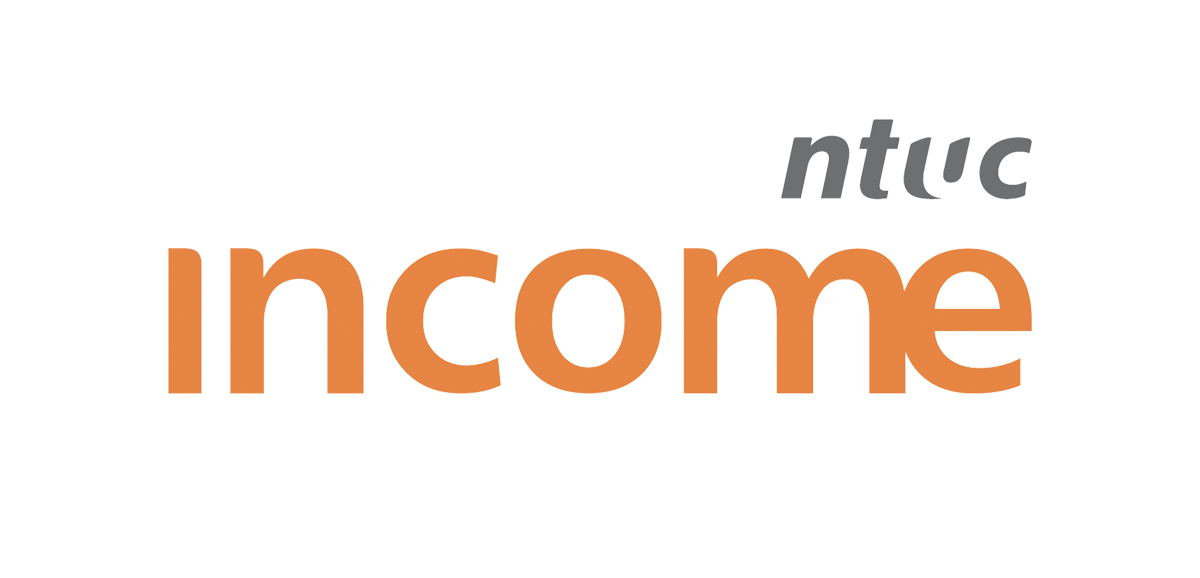9 Best Retirement Annuity Plans in Singapore
Take a minute or 2, close your eyes and imagine – what does your dream retirement look like?
Is it travelling from country to country, cruise to cruise, laying by the beach and sipping cocktails?
Or perhaps it’s pursuing your passion that you’ve always wanted to do but never had the time to?
Or maybe it’s just spending time with your loved ones, and buying gifts and delicious food for your precious grandchildren?
No matter what age you’re at, you’ve probably thought about your dream retirement. You’ve probably imagined how you’re going to enjoy the final years of your life after the 996 grind you’ve been going through for the past 50-60 years of your life.
But why dream of it when you can make it a reality? To take the first step, you would need to have proper financial planning in place. And one way to start is with a retirement annuity plan.
In this article, we take a deep dive into the features to factor in when selecting your retirement plan, and identify the best retirement annuities in Singapore based on different classes.
Don’t know what a retirement annuity plan is? Read this first.
Factors to Consider when Choosing Your Retirement Annuity Plan
Expected Retirement Income
When choosing your annuity plan, the first question to ask is – what’s your dream retirement? If you skipped the above question, here’s your prompt to imagine it again.
This might sound weird, but once you get this question out of the way, you can determine your expected retirement income amount.
There is no “right” retirement income.
If you just pluck an arbitrary amount from some random article on the internet just because it’s what most people go for, you might end up paying for more than you need, or worse, not having enough to enjoy the retirement years that you hustled so hard for.
How much do you need to continue your current standard of living? Do you require additional money to beat inflation?
Are you expecting to go on an Around the World in 80 days expedition to make up for the travel escapades you missed out on due to COVID?
Will you need to fund those secret McDonald’s trips when you bring your grandchildren because they are “banned from fast food”?
Once you’ve determined your desired retirement income, the next thing to look at are the plans that you currently own that will also supplement your retirement.
This includes endowment products, investment-linked plans, etc., and of course, your CPF LIFE plan, which is a national annuity scheme that everyone has.
Subtract these from your total expected retirement income, and you’ll arrive at the amount that your private annuity plan should cover.
Knowing this number will help in a lot of the decisions you make later on.
Guaranteed vs Non-Guaranteed Returns
Once you’ve arrived at the retirement income your private annuity should provide you, the next step would be to take a look at the projected income the different retirement plans provide.
While many insurers tout returns of up to 4 to 5% p.a., and up, you should take this number with a pinch of salt because it comes with a guaranteed and non-guaranteed portion.
Unfortunately, while non-guaranteed returns are great to have, there’s a likelihood that they may not be realised. So it’s risky to rely on this number to select your plan.
Instead, what you should be looking at is the guaranteed income. It should be sufficient enough to cover the amount you’re expecting to receive from your private annuity.
And if the non-guaranteed returns are realised, then hooray, you get to treat yourself.
That’s not to say that the non-guaranteed returns are not important. After all, we put our money into the plan expecting it to grow, but you should not rely on it alone.
Non-guaranteed returns are based on the insurer’s participating fund performance.
If you’d like to find out more on how to look at park fund performance, check out the “Expected Rate of Return” section in our best whole life plan in Singapore article.
Additional Payout for Disability
If you were to – touch wood – suffer from total and permanent disability in your later years, the reality is that you might need to hire a caretaker and put some money into long-term care costs.
This might mean having to dip into your retirement funds.
While this is not a thought most of us want to entertain, it’s always best to err on the side of caution and be prepared before anything happens.
If you’ve already got your disability insurance covered into your retirement, then there’s no need to worry about this.
However, if you don’t, fret not! There are a few retirement annuities that cover disability, providing you with additional payouts on top of your plan’s basic retirement monthly income if you were to suffer severe disability or TPD.
One thing to note is that every plan’s definition of disability differs, so do familiarise yourself with them and select the one you’re most comfortable with before you make your decision.
Premium Payment Factors
Premium Term
The next step is to determine how you’d like to fund your plan, starting with how long you want to be paying for your plan.
There are 2 main categories when it comes to premium terms – single premium and regular premium.
As its name suggests, single premium plans essentially mean that you would need to fork out a lump sum amount of money to pay off your entire plan in one shot.
If you don’t have that much liquid cash on hand, there’s always the regular premium option.
All retirement annuities are limited pay plans, so by the time your payouts start, all your premiums would have already been paid off.
Your premium term options depend on your plan of choice. Generally, most insurers offer a premium term of 5 to 25 years, in multiples of 5.
Premium Amount
Unlike life insurance and critical illness plans, your premiums are not affected by your health, medical condition, gender, or age, etc.
Instead, your premiums are dependent on your desired retirement income, when your payouts start, and how long your payouts are expected to last.
Additionally, the usual suspects like your premium frequency and the premium term also affect the total amount you have to pay.
As a rule of thumb, the longer your premium term, the more total premiums you pay. But a shorter premium term means having to pay a higher premium at each payment.
Ultimately, it is about striking that balance between choosing a premium term you can afford comfortably at the shortest possible premium term.
Mode of Payment
Apart from paying your premiums with cash, retirement plans are unique in that they allow you to tap into your Supplementary Retirement Scheme (SRS) to fund your plan.
For those who are newer to the world of investing and financial planning, the SRS is a voluntary scheme set up by the government to encourage you to save for retirement beyond CPF.
It provides benefits such as tax relief and a basic interest rate of 0.05% per annum if you choose to do nothing and let your money sit.
However, you’re able to invest your SRS monies into certain investment instruments to make your money work harder for you. One of the best options being retirement annuities.
Not all plans have an SRS payment option and those that do usually only allow you to pay using SRS if you opt to pay by single premium.
Payout Factors
When Payouts Commence or Accumulation Period
Now we’ve come to the million-dollar question, when do you want to start sipping piña coladas by the beach?
In other words, when do you expect to stop working and kick start your retirement payouts?
Payouts only start after your premiums have been fully paid. Some insurers allow you to start your payouts immediately after and these are known as immediate annuities.
There are also deferred annuities, where you would need to wait for a certain time before your payouts commence. Known as the accumulation period, there are 2 options commonly offered. To start your payouts:
- at a certain age, or
- after a selected number of years.
If the plan offers you the option to choose the age to start your payouts, it’s as straightforward as the name suggests.
The common ages offered by most insurers are between the ages of 50 to 70, usually in multiples of 5. Some plans allow you to select an age outside of this window.
If the plan only allows you the option to select from a certain number of years, you might need to do a bit of working backward.
You will first need to determine what age you want your payouts to start, then determine what age you will pay your last premium.
The difference between the 2 is the accumulation period that you should select.
If anything, some insurers allow you to keep your payouts in your plan and not withdraw them to accumulate interest if you don’t need it at the moment.
So, look for a plan with this option if this flexibility is important for you.
Payout Period
Do you want your payouts to end after a certain period, or do you want them to last for life? The payout period is how long you want your payouts to last.
Some plans only offer 1 or 2 options while others have a range of options between 5 to 35 years.
If you’re looking for a very specific payout period like 18 years, and are adamant on this, then you should narrow down your choices to plans that offer this option.
If you’re looking for a payout period that is more common like 10 or 20 years, then most plans in the market would be suitable.
Ultimately, this comes down to personal preference again.
If you’re worried about locking in your payout period now when retirement seems to be ages away, some insurers allow you to change your payout period before your payout starts.
Payout Frequency
Last but not least, consider how often you’d like to receive your payouts.
Most plans on the market offer either the option to receive your payouts monthly or annually, but there are a select few that allow you to receive payouts on a half-yearly or quarterly basis as well.
There are merits to both monthly or annual payouts and the selected payout frequency would vary by individual priorities.
Some questions for consideration are:
- If you opt for an annual payout, do you have the self-discipline to spread it over the year? Or will you spend it in one shot?
- Do you need a large sum of money in certain months, or is your expected expenditure likely to stay constant throughout the year?
- Perhaps you have a trip planned every single year, and the cost of traveling might be more than a month’s payout, so in this case, it might be wiser to opt for an annual payout.
As most plans only offer one payout frequency option, if this factor is high up on your selection criteria, you might want to narrow down the plans to your selected payout frequency before looking at other criteria.
Earlier, it was also mentioned that some plans allow you to keep your payouts if you don’t have an immediate need for it, and withdraw certain amounts when the need arises (with a few terms and conditions).
Therefore, if you’re worried about being tied down by your choice, you can always select a plan with the option to keep or withdraw your annuities.
Others
Protection Coverage
One factor that might be a priority for some could be the plan’s insurance coverage.
As the main objective of this product is to provide you with retirement payouts and grow your money, the protection offered may not be as spectacular as compared to a life insurance plan.
While individual circumstances tend to differ, I personally feel that this factor shouldn’t be the highest on the list. But if this is important to you, by all means, go ahead.
All insurers offer basic death protection, usually the higher of:
- 101 – 105% of your total premiums paid minus any benefits paid out, or
- The surrender value
However, the above has been overgeneralised so do take a look at the plan’s policy contract to determine the exact death benefit you’re entitled to.
Certain plans also cover terminal illness and even total & permanent disability (as a lump sum payout), so it’s good to take a look if it’s one of your priorities.
Joint Ownership
Worried about what will happen to your loved ones if you go before your time?
While there is a death benefit, some plans allow you to appoint a secondary life insured to ensure the continuity of the plan.
The benefit of having your plan continue is that they can continue to receive monthly payouts, and enjoy the non-guaranteed benefits of the plan.
In comparison, if your plan doesn’t have a secondary life insured, and you were to pass on, the plan will payout the death benefit in a lump sum, and any cash accumulation will terminate as well.
Additional Features on Basic Plan
Other than what was mentioned above, certain plans also provide you with other value-added features on your base plan.
This includes features like premium waivers (on your basic plan and not as a rider), the ability to pause your premiums for a while interest-free, and others.
Don’t expect anything too spectacular like in the case of critical illness plans or life insurance plans though.
As the basic premiums of annuity plans tend to be quite high already, if the insurers add any more features to your basic plan, your premiums might shoot through the roof.
Comparison of Retirement Annuity Plans in Singapore
| NTUC Income Gro Retire Flex | NTUC Gro Annuity II | Prudential PRUActive Retirement II | AIA Retirement Saver (IV) | Great Eastern GREAT Retire Income | Great Eastern GREAT Prime Rewards | Great Eastern GREAT Lifetime Payout | Aviva MyRetirementChoice (III) | Aviva MyLifeIncome (III) | Manulife RetireReady Plus (III) | Tokio Marine Retirement GIO Plus (II) | Tokio Marine Nest Egg (FlexiSaver) | China Taiping i-Cash (III) |
China Life Lifetime Income
|
|
| Premium Term Options | SP, 5 to 40 years (in multiples of 5) | SP | SP, For RP, any years up to 4 years before payout starts | SP, 5 or 10 years, or up to 5 years before payouts start | 5, 10, 15, 20 years | SP | 3 years | 5, 10, 15, 20 or 25 years | SP, 3, 5, 10, 15, 20 or 25 years | SP, 5, 10, 15 or 20 years | 5 years | 5, 10, 15 years | 5, 10 years |
5, 10, 15, 20 or 25 Years
|
| SRS Payment Available? | Yes | No | Yes | Yes | Yes | Yes | No | No | Yes | Yes | No | No | No | No |
| Payout Period | 10, 20 years or till age 100 | Lifetime | 10, 15, 20, 25 or 30 years | 15 or 20 years | 10 or 20 years | 10, 15, 17, 20 years | Lifetime | 5 to 35 years | Lifetime | 5, 10, 15, 20 years or lifetime | Lifetime | 10, 15, 20 years | to age 85 | Lifetime |
| Accumulation Period/When Payouts Commence | SP: 5 – 50 years RP: 10 – 50 years |
No option, payouts start immediately | Start payouts from age 50 to 90 | Start payouts at age 50, 55, 60, 65 or 70 | Start payouts at age 56, 61, 66 or 71 | 0, 3 or 5 years* | No option, payouts start immediately | 5 year premium: 5 – 40 years^ 10, 15, 20 or 25 year premium: 0 – 40 years^ |
SP: 4 to 20 years 3 years premium term: 2 to 20 years Any other premium term: 0 to 20 years |
Start payouts at age 50, 55, 60, 65 or 70 | No option, payouts start immediately | 0 to 10 years | start payouts immediately or 1 year before policy matures | 0 to 40 years |
| Frequency of Payouts | Monthly | Monthly, Quarterly, Half-yearly or Yearly basis | Monthly | Monthly | Monthly | Annual | Monthly | Monthly | Annual | Monthly | Annual | Monthly | Annual | Annual |
| Additional Payouts due to Disability | 1.5x monthly cash benefit (Max: 3,000) | – | 2X monthly cash benefit (Accidental Disability) (Max: 6,250+) | – | 1.5X monthly cash benefit if unable to do 2 ADLS (Max: 2,500) 2X monthly cash benefit if unable to do 3 ADLS (Max: 3,000) |
– | – | 1.5X monthly cash benefit if unable to do 2 ADLS 2X monthly cash benefit if unable to do 3 ADLS |
– | 1.5X monthly cash benefit if unable to do 2 ADLS (Max: 2,000) 2X monthly cash benefit if unable to do 3 ADLS (Max: 4,000) |
– | – | – | – |
| Protection | Death, Terminal Illness & Accidental Death | Death | Death | Death | Death, TPD & TI | Death, TPD & TI | Death & TI | Death & TI | Death & TI | Death & TI | Death & TI | Death & TI | Death | Death & TI |
| Additional Features | – Flexibility to change income payout period 30 days before start of payout – Appoint secondary life assured who will receive payouts if life assured were to pass on – 6 month premium waiver if retrenchment – Payout 6x of monthly benefit if disabled during accumulation period – Option to withdraw premiums or keep them to accumulate interest |
– | – Flexibility to change income payout period 2 months before start of payout – Premium waiver in the event of accidental disability – Appointed spouse, who is also a joint owner, will succeed your policy if you pass on – Option to withdraw premiums or keep them to accumulate interest |
– 12 month interest free premium deferment if retrenched – Non-guarateed terminal dividend bonus upon claim, maturity or surrender of policy |
– Flexibility to change income payout period 6 months before start of payout | – Option to withdraw premiums or keep them to accumulate interest | – Option to withdraw premiums or keep them to accumulate interest | – Premium waiver for TPD – Flexibility to change monthly payouts into a lump-sum payout in event of partial disability – Choose to receive lump-sum payout at your chosen retirement age, which can be converted into monthly payouts – Option to withdraw premiums or keep them to accumulate interest |
– | – Flexibility to change income payout period 2 years before income payout – Payout of 50% of annual mode premium if you are retrenched – Able to freeze premiums for 1 year and have your policy stay in-force |
– | – | – Lump sum payout at 85 – Option to withdraw premiums or keep them to accumulate interest |
– Option to withdraw premiums or keep them to accumulate interest at 2.75% p.a.
|
^ Subject to Entry Age + premium payment term + Accumulation Period ≤ 80 ANB
+ Additional payout + basic monthly payout combine
All plans are payable using cash
Best Retirement Annuity Plan in Singapore
Now that we’re acquainted with the key factors of an annuity plan, we’ve completed the first step of your initiation into selecting an annuity plan that is suited for you and living out your dream retirement.
To aid you in your decision, we’ve gone ahead to identify the best retirement plans in Singapore based on a select few categories.
All views expressed in this article are our own personal opinions. Before you sign off on that cheque, it’s always good to speak to a certified financial advisor, or perhaps get a second opinion.

Manulife RetireReady Plus (III)
Are you ready for retirement? Manulife’s retirement annuity plan will ensure you are coming out on top amongst all the annuity plans. It boasts a little bit of everything.
It offers a decent selection of premium terms and payout periods. While not the most flexible, it is still one of the top contenders. You can also opt to pay by cash or SRS.
When it comes to choosing when to receive your payouts, you can select your desired age between ages 50 to 70, in multiples of 5. If you were to follow the “standard” retirement journey, these options should be more than enough.
In the event that you become disabled, the plan will also provide an additional payout to help supplement your long-term care needs once you’re unable to carry out 2 Activities of Daily Living (ADL).
On top of that, you are also entitled to a lump sum payout if you were to get retrenched and can opt to freeze your premiums for a year but still have your policy remain in force if your financial circumstances change.
This multitude of benefits would fit many different needs and priorities, which is why I personally feel it emerges as the top amongst the plans available.
Best SRS Single Premium Retirement Plan

Manulife RetireReady Plus (III)
By extension of the points above, the best SRS single premium retirement plan is also Manulife’s RetireReady Plus (III), mostly due to how well-balanced it is.
What stands out to me is that when it comes to the payout period, it allows you to select 4 different time periods or a lifetime payout.
Amongst the plans that offer an additional disability payout, its definition for disability is the most lenient, paying out once you’re unable to perform 2 ADLs without aid.
However, I personally feel that all the SRS single premium plans have their own individual strengths, and Manulife’s RetireReady Plus is just a queen amongst queens.
So, if you’re looking for an SRS single premium annuity, I would suggest taking a look at them all to see which best fits your needs.
Best SRS Single Premium Retirement Plan with Highest Expected Return
Let’s now look at how the different SRS single premium plans fare when it comes to expected returns. We’ve tried to keep it as many factors as consistent as possible to make the comparison fair.
| NTUC Income Gro Retire Flex | Prudential PRUActive Retirement (II) | AIA Retirement Saver (IV) | Manulife RetireReady Plus | |
| Start Payouts at | 71 | 70 | 70 | 70 |
| Accumulation Period | 21 | 20 | 20 | 20 |
| Payout Duration | 10 | 15 | 15 | 15 |
| Premium Paid | 50,000 | 50,014 | 49,945 | 49,027 |
| Guaranteed Returns | 57,630 | 65,160 | 63,000 | 55,800 |
| Non-Guaranteed Returns | 73,841 | 75,535 | 100,829 | 75,859 |
| Total Expected Returns | 131,471 | 140,695 | 163,829 | 131,659 |
*Numbers are based on 50-year-old male, non-smoker, single premium generated from CompareFirst
^Returns are based on a 4.25% illustration rate except for PRUActive Retirement (II) which is based on a 4.00% illustration rate
Aviva’s MyLifeIncome also offers SRS single premium payment. However, as it only has a lifetime payout option, it was not included in the above table.

AIA Retirement Saver (IV)
If you’re in the market for a plan with high expected returns, AIA’s Retirement Saver (IV) might be a good option to consider as seen from the above comparison.
We’ve even tested different permutations of accumulation and payout period, and most of the time, in terms of expected total returns, AIA’s private annuity comes out as one of the top, if not the top.
Unfortunately, feature-wise there’s not much to shout out about, but I guess you win some, you lose some. It depends on what your priorities are.
Do note that the returns shouldn’t be taken at face value. They include both a guaranteed and non-guaranteed component, and the latter is not a confirm plus chop amount.
In fact, the realised amount might be lower.
Additionally, things might change if you select a different accumulation period and payout period.
Although we’ve compared a few of the permutations available, it’s also good to do your own due diligence and compare the policy illustrations if you’re looking for high expected returns.
Best Retirement Plan for Guaranteed Payout (Excluding Lifetime Payout)
As mentioned before, the guaranteed payout should be the first thing you zoom into when choosing your plan. So, we’ve compared the guaranteed payouts for a few plans based on a pretty standard scenario.
We’ve tried to keep it as consistent as possible to keep things fair, but AIA’s plan did not have a 10-year payout duration, so we had to tweak it slightly
| NTUC Income Gro Retire Flex | Prudential PRUActive Retirement (II) | AIA Retirement Saver (IV) | Manulife RetireReady Plus | Tokio Marine Nest Egg (II) FlexiSaver | Great Eastern GREAT Retire Income | |
| Start Payouts at | 71 | 70 | 70 | 70 | 70 | 71 |
| Accumulation Period | 20 | 10 | 10 | 10 | 10 | 10 |
| Payout Duration | 10 | 15 | 10 | 10 | 10 | |
| Premium Term | 10 | 10 | 10 | 10 | 10 | 10 |
| Premium Paid | 50,000 | 50,000 | 49,352 | 49,698 | 50,116 | 50,000 |
| Guaranteed Returns | 58,594 | 59,532 | 55,800 | 54,000 | 52,800 | 59,760 |
| Non-Guaranteed Returns | 46,435 | 37,347 | 69,065 | 45,504 | 47,678 | 40,810 |
| Total Expected Returns | 105,029 | 96,879 | 124,865 | 99,504 | 100,478 | 100,570 |
*Numbers are based on 50 year old male, non-smoker, single premium
^Returns are based on 4.25% illustration rate except for PRUActive Retirement which is based on 4.00% illustration rate

Great Eastern’s Great Retire Income

NTUC Income Gro Retire Flex
As shown above, Great Eastern’s plan has the potential to earn the highest guaranteed payout.
However, in this case, I would personally go with NTUC Income’s Gro Retire Flex, mainly because its guaranteed payout only falls short of GE’s plan by slightly over $1,000, but it has the potential of bringing in almost $5,000 more total expected returns.
But if you are more risk-averse and prefer guaranteed returns over potential, GE’s plan might be more suitable. It’s really to each your own.
Ultimately, different permutations of the accumulation period, payout period and the premium term might yield different results. Always do your own research or get a financial advisor to compare the plans for you based on your personal circumstances.
Best Retirement Plan for Disability

Aviva MyRetirement Choice
Looking for a plan with substantial disability coverage? Aviva’s MyRetirement Choice might be the choice for you, offering a monthly disability payout if you are unable to perform 2 or 3 ADLs.
Some of you might prefer to receive a lump sum payout rather than a regular stream of monthly income if you were to be disabled.
If this sounds like you, Aviva’s plan gives you the option to convert your additional monthly payouts into a lump sum instead and is the only plan to offer this option.
On top of that, your premiums will be waived if you were to suffer from TPD.

NTUC Income Gro Retire Flex
NTUC Income’s Gro Retire Flex is also a strong contender in this category, providing a monthly payout if you were to become disabled. Its definition of disability is slightly different and a bit stricter than Aviva’s:
- Loss of use of one limb
- Loss of speech
- Loss of sight of one eye
- Loss of hearing
Apart from providing a disability payout, if you become disabled during the accumulation period, you’ll also receive a lump sum payout worth 6 of your monthly payouts. This is a feature that no other insurer offers.
If you don’t have any disability insurance, this might be a good option to consider as it covers you even before your payouts start.
Best Retirement Plan for Flexibility

Prudential PRUActive Retirement
Prudential’s plans tend to appear a lot when we talk about flexibility, and its retirement plan is no exception either.
It offers you a host of options of premium term options – single premium or a regular premium option of any number of years up to 4 years before your payout starts.
And you can even opt to start your payouts anytime between the age of 50 to 90.
It loses out slightly when it comes to payout period options, but it is still decent with 4 standard options – 10, 15, 20, 25 years.
If up to 2 months before your payout starts, you feel that the payout period you initially selected doesn’t work for you anymore, you’ve always got the option to change it.
Once your payout starts, you can also choose whether you want to withdraw them or keep them to accumulate interest

Aviva MyRetirementChoice (III)
Alternatively, if you prefer to have more options for the payout period, check out Aviva’s MyRetirement Choice (III), which allows you to choose a payout period between 5 to 35 years. It has an accumulation period of 0 to 40 years and 5 premium term options for you to choose from.
At your retirement age, you can also exercise the option to receive your annuity as a lump sum payout rather than a monthly payout.
The reason why it lost out to first place is that it does not have an SRS option payment option and payouts stop once you’re 80. Considering our longer life expectancy, you would most likely outlive your payouts.
Conclusion
And there you have it, the key factors you should consider before you purchase your retirement plan and the best annuity plans in Singapore.
With all this information under your belt, we hope you’re now better equipped to go out there and build up your golden retirement nest egg.
Always remember that everyone’s dream retirement is different. While we’ve selected a few of the top private annuities by category, it is based on our personal opinion.
So, it might be possible that the perfect plan for you is not even on this list.
Still unsure which plan you should get even after the crash course? We’ve got you covered. Our network of well-versed financial advisors will take the time to understand your needs so as to recommend the best plans for you. Reach out today!
source https://singaporefinancialplanners.com/blog/best-retirement-annuity-plans-singapore/
Comments
Post a Comment